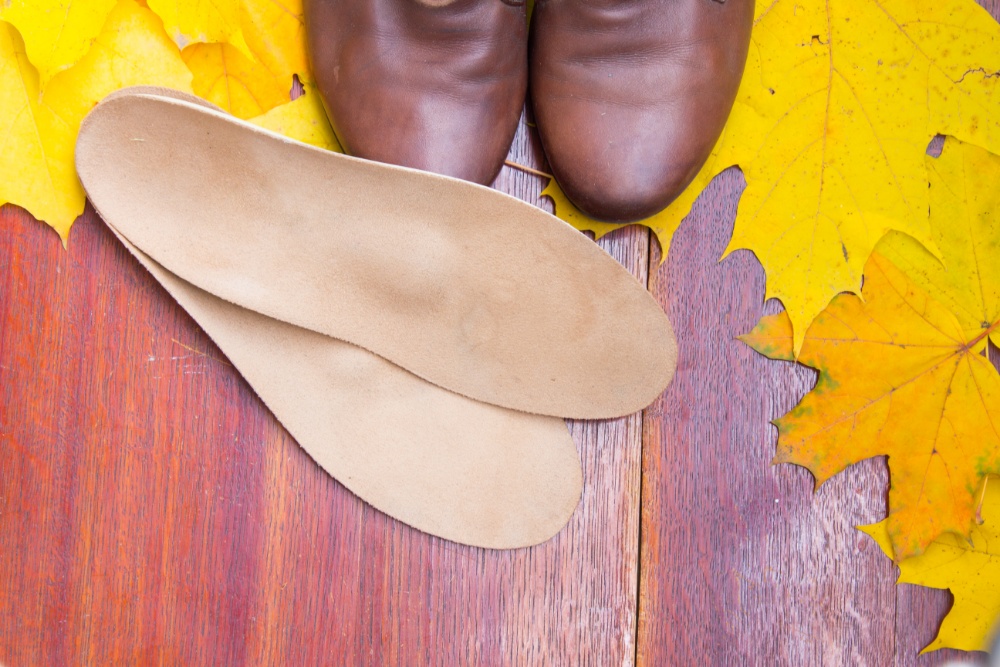Orthotics For Young, Old, And Every Age Between!
We might not think about it too often (if at all), but our feet give each of us the opportunity to do so much.
Sure, standing and walking—to say nothing of running and jumping—are a given, but we even rely on our trusty lower appendages to operate the gas and brake pedals in our cars.
Accordingly, it’s a big problem when medical or health issues cause pain or take away functionality in our feet and ankles. Fortunately, our office provides many different techniques and tools to help you overcome pain and regain normal function!
An especially versatile treatment option we offer for lower limb problems—one that is proven to work for many patients—is orthotic therapy.
If you have foot pain (or certain other issues we’ll discuss shortly), a pair of custom orthotics might be the right solution for you. At the very least, orthotic therapy could be part of the treatment plan that helps you start to recover from the injury or condition responsible for your suffering.
So why would we prescribe orthotics to a patient?
Well, one big reason is the fact orthotics can be used in treatment for a wide range of medical conditions. Many root causes of foot pain are related in some way or another to issues either with foot structure or irregularities in biomechanical processes – and in many instances the two are related.
In the context of foot structure, an area of variance from person to person can be arch height.
Now, there are essentially three different kinds of foot arches: medium, high, and low.
The most “normal” of the three is a medium height. Someone who has this kind of foot arch is likely going to pronate in a neutral manner and probably won’t have any issues from it.
Before we go further, let’s take a quick moment to get you up to speed on pronation.
Pronation is a completely natural process feet undergo with every step. Basically, this refers to a roughly 15 percent inward rotation that takes place between the heel strike of a landing foot and the final push of the toes off the ground.
Why do we pronate? Does a foot really need to rotate during the ground portion of a step?
This is a very important biomechanical process because of the tremendous amounts of force we all place on our lower limbs. It’s likely you don’t realize this, but when a foot lands and our weight shifts onto it, the actual force load is greater than how much we weigh. In fact, those forces can be as great as two times our bodyweight.
That’s just when we walk! Running increases the forces to as much as four times our bodyweight with every step.
All that force adds up, and especially when you consider the fact an average person takes 10,000 steps in a day. (Of course, that figure is skewed a bit by those who take considerably more steps, like runners, military servicemen and women, etc.)
Pronation is one of the ways our bodies can handle all of the physical strain. It disperses the force in a fairly equitable manner – to prevent any one area from receiving more than its fair share (and hold that thought).
Okay, now that we’ve covered pronation, it’s time to connect arch height, pronation patterns, and force loads, and how this all relates to orthotic devices!
We’ve already established that arches of medium height generally result in neutral pronation. When foot arches are either low or high, it impacts this process.
Low foot arches flatten quickly after the heel strikes the ground – but it still takes time before the toes are going to push off the ground. Until they do, the foot continues its inward rotation. This takes it beyond the ideal “15 percent” mark.
When a foot pronates excessively like that, we call it overpronation.
Conversely, high foot arches (cavus foot) start to flatten late in the process. As you might expect, this means they do not pronate nearly enough, and this is called supination.
Overpronation and supination might not sound like big issues—“The foot just rotates too much or not enough. What’s the big deal?”—but it’s important to remember the reason behind pronation – evenly distributing force loads.
Someone who overpronates ends up placing too much force on the inner edge of the foot, and especially the joint at the base of the big toe. With supination, too much force is placed on the outer edge of the foot.
And this is where orthotic therapy comes into play.
Custom orthotics are devices we use to modify and control foot motion, including pronation. Depending on your needs, we might prescribe a pair that either restricts or promotes foot rotation.
There are two general categories of orthotics – functional and accommodative.
In the case of orthotic therapy for pronation issues, we will use functional ones to achieve our objectives. Functional orthotics are constructed from sturdy materials, which make them better able to restrict motion.
Accommodative orthotics are constructed from softer (yet durable) materials. These may be prescribed to help provide additional cushion for areas of the foot that need it.
Having two different types of orthotics is a good starting point for showing how this is a versatile treatment option – but, as the infomercial spokespeople always say, wait, there’s more!
See, the true advantage of using orthotics to treat foot conditions is that we customize these devices to your unique feet and gait patterns. No two feet are completely alike and we all have at least slight variances in how we walk. Custom orthotics can take those important factors into consideration – which distinguishes them from off-the-shelf shoe inserts at retail stores.
Now, this isn’t to say those inserts don’t have any value. If you are on your feet all day and need some extra cushion—but aren’t experiencing an actual medical or health problem—grab some shoe inserts. Don’t feel as though your shoes provide enough arch support? Inserts might be the way to go.
Just keep in mind – off-the-shelf inserts are not intended to treat a medical problem!
Speaking of treating medical problems, custom orthotics do this in spades. They can be used to treat issues as diverse as bunions, hammertoes, metatarsalgia (forefoot pain), and plantar fasciitis. If you are diabetic, we might prescribe some to keep your feet safe and reduce your risk of serious complications.
Custom orthotics might be part of the treatment plan we create to address your foot pain or restore functionality, but we have a range of other options as well. For more information about orthotic therapy contact Sierra Foot & Ankle today by calling (775) 783-8037.
You can also take advantage of our online form to connect with our Carson City office right now.
Get In Touch
Address
2350 South Carson St
Suite 3
Carson City, NV 89701
Contact
Call: (775) 783-8037
Fax: (775) 782-3787
OPT-IN To Text:
By texting our office at
(775) 783-8037 from your mobile phone, you are consenting to receive SMS text messages from our staff. Reply STOP to unsubscribe.
*Read our Privacy Policy & Terms and Conditions.
Social




© Sierra Foot & Ankle. All Rights Reserved. Privacy Policy.
Web Design by CP Solutions. Marketed by VMD Services.

